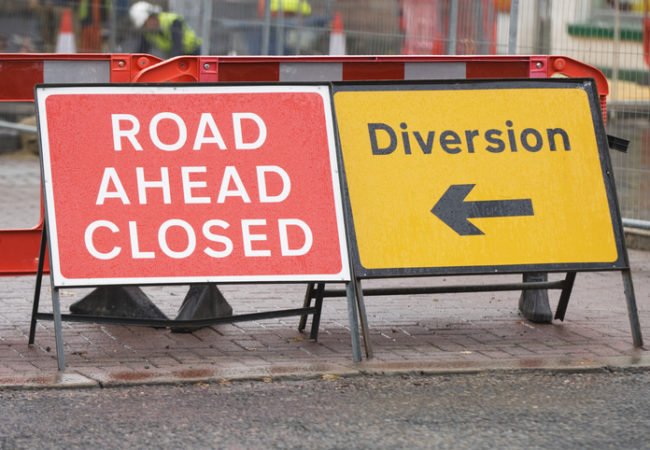
How many times have you driven along the road to see road signs or temporary barriers have been blown over or moved from the position they should have been located? Recently the UK has been experiencing severe harsh winds with anything not attached to the floor or building having the potential to fly off into the back of beyond.
Road works and work on the public footpath creates a number of hazards, having the correct road signs, correctly spaces and located is essential. If they move, fall over or sway they have the potential to cause accidents, rather than protect pedestrians and road users. There have been a number of serious accidents including, one where a motor cyclist was killed following a collision with traffic signs which had blow over into the road.
The Safety at Street Works and Road Works code of practice from 2013 brought in new standards for signage and more importantly how they need to be located and designed to withstand wind and still remain stable.
Today’s signs and barriers benefit from more modern designs with contoured sections to allow the wind flow around and through the barrier or sign. Rounded edges allow the wind to flow around rather than impact and push the object around or over.
The code of practice is supported by a number of British Standards including BS8442. Accessories and barriers need to be stable to ensure the safety of pedestrians, those involved in road works as well as road users. Ideally equipment should be designed and fitted with integral weights rather than relying on extra weights such as sand bags or wooden blocks. Water filled barriers can be a useful addition to site safety, light weight until filled.
Thinner anti trip style feet are the norm now, slimmer they reduce the risk of trips and falls but still support the barrier or sign sufficiently. Expandable and adjustable barriers can be moved and added more easily than the larger sectional barriers.
The colour also needs to be considered to ensure maximum visibility. Where multiple barriers are to be used clips or clamps are needed to attached the together , they should be “joined inn a way which Resist tampering”. Clamps may require special tool to enable them to be released.
Road works and work on pathways can attract the wrong type of person, anti social behaviour can be attached to road works. There needs to be balance between safety and security, gaps need to allow the wind through but not be large enough for a child or adult to climb through.
It is important that contractors and employers are taking all the necessary steps to correctly mark road works, giving adequate notice to the road user, protecting them and road workers. Accidents and injuries need to be prevented, with organisations needing to proactively show they are complying with the stature legal standards. Reducing the risk of prosecution by the HSE or civil actions by any injured parties.
For more information about Health and Safety at work take a look at the Health and Safety courses online with Cambridge Safety.
Back to blogs



